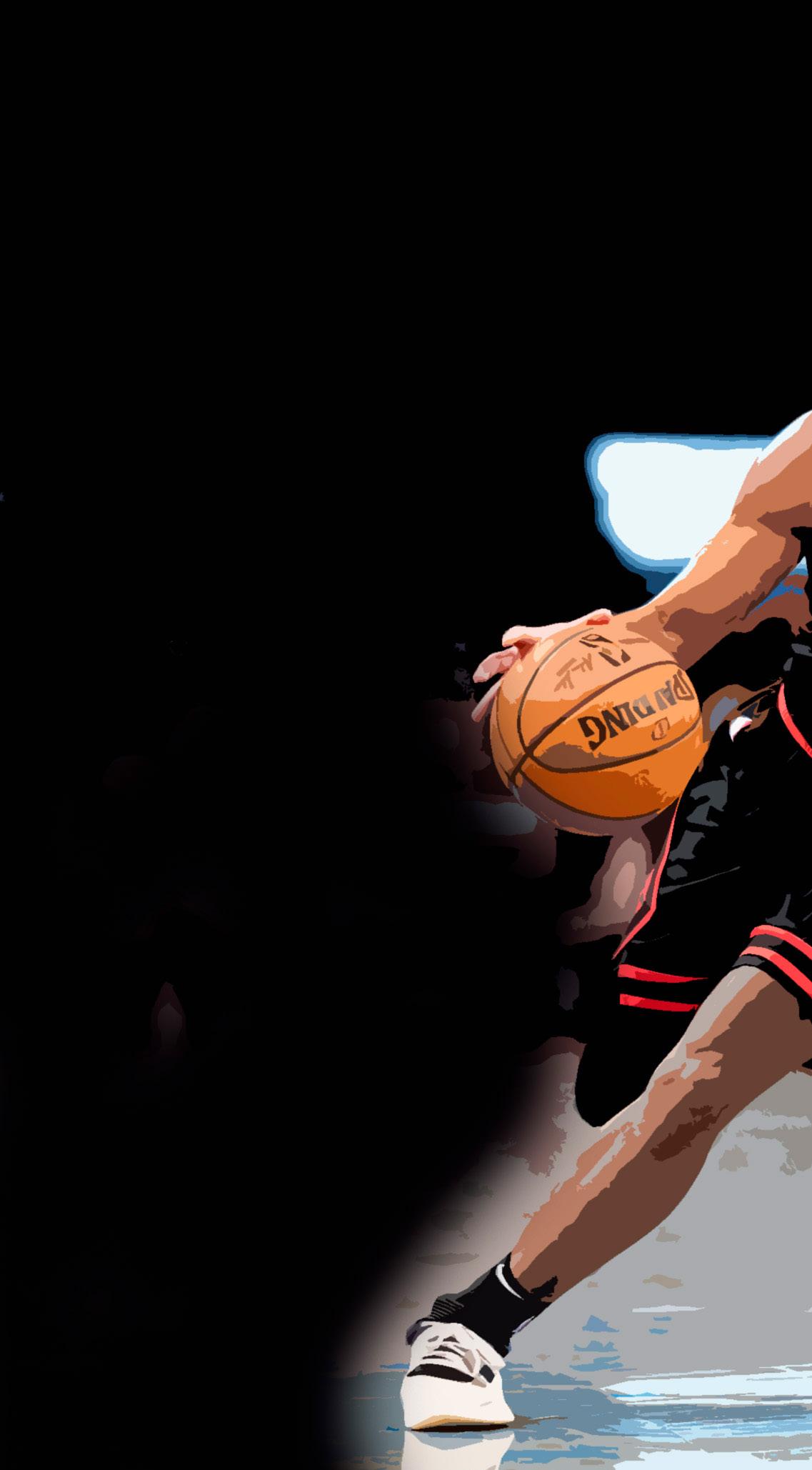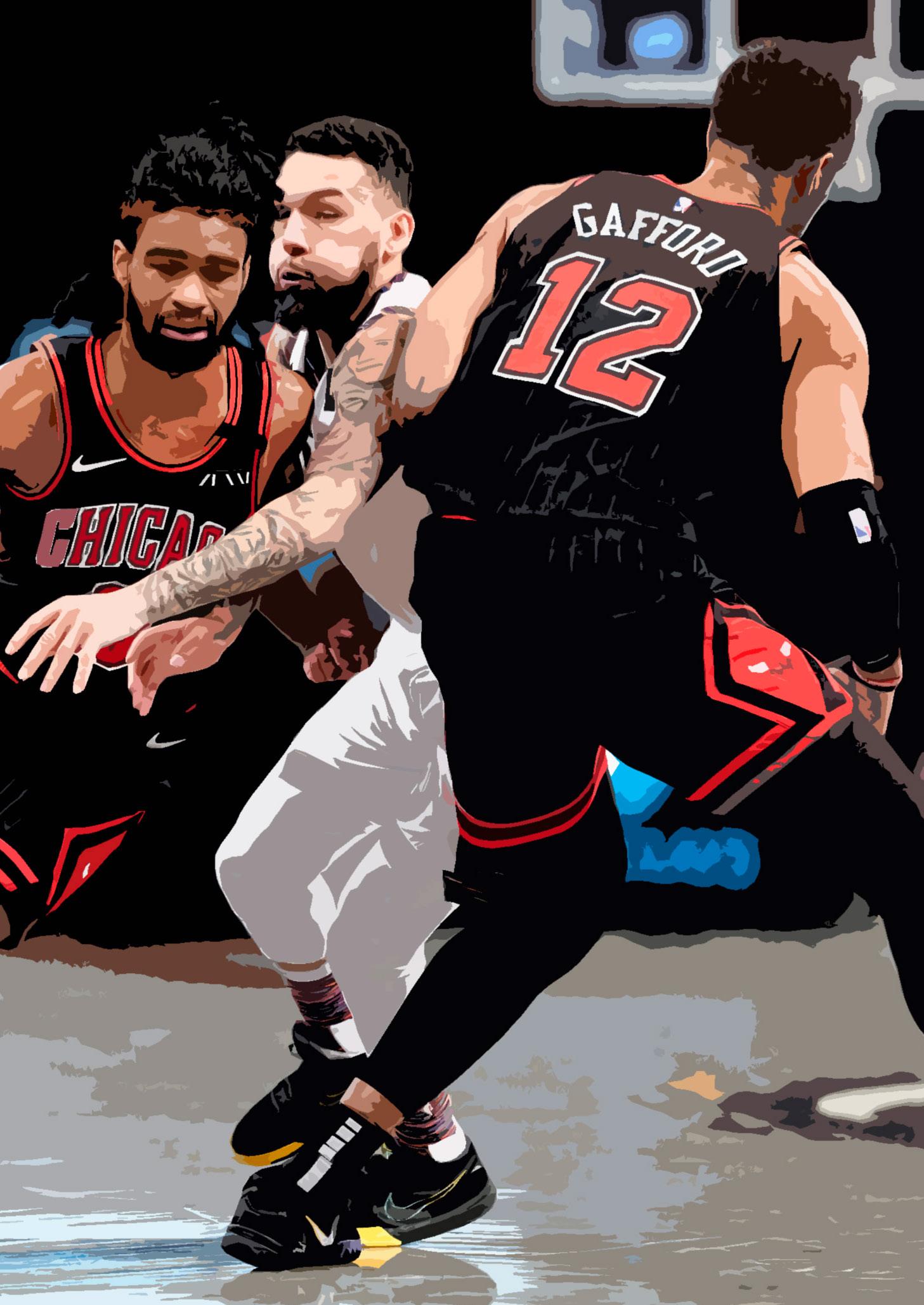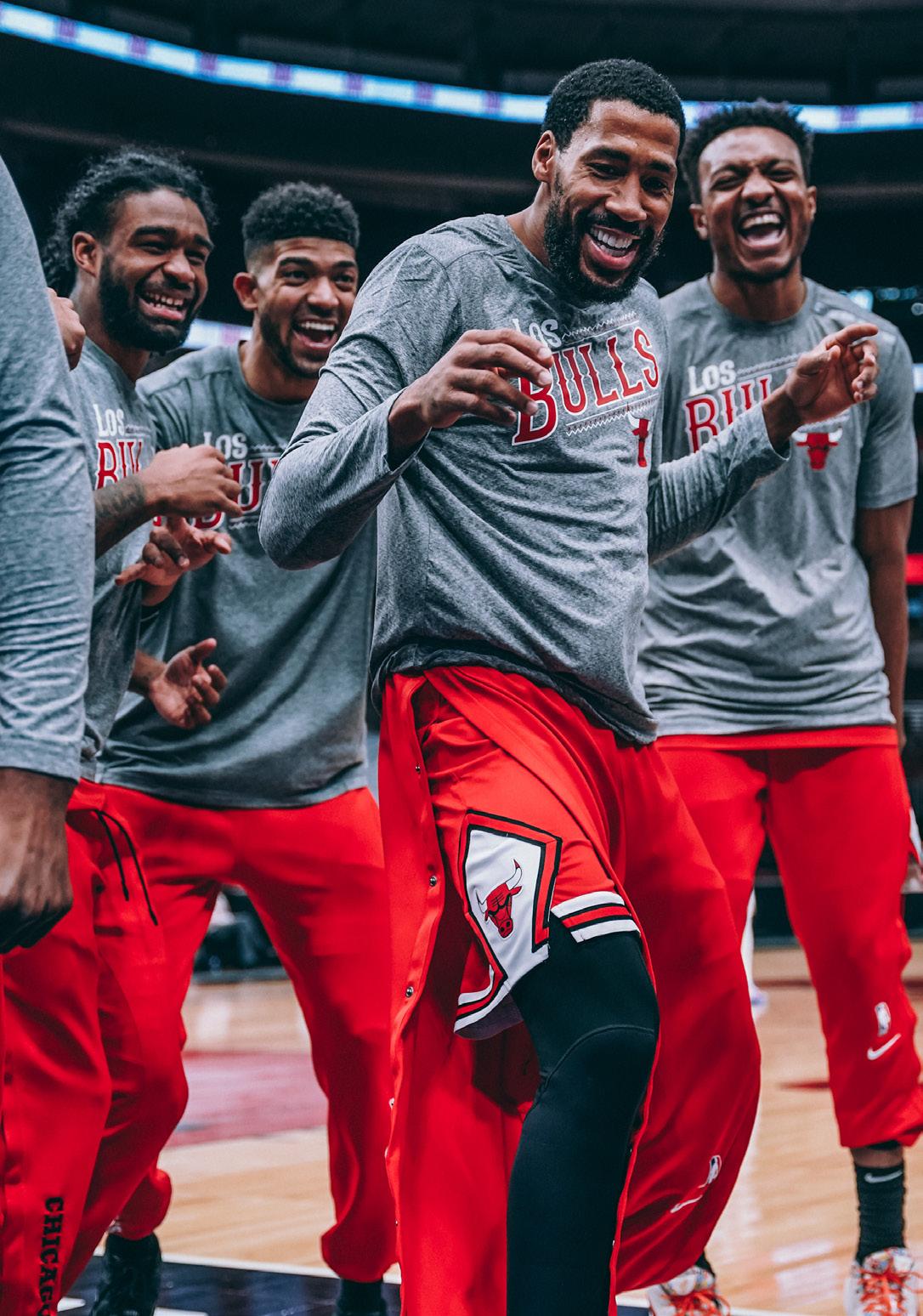
6 minute read
Diversification key to Chicago Bulls’ digital growth
Luka Dukich, Director of Content for the Chicago Bulls, shares why being adaptable is key for digital success and the importance of diversification to reach new audiences as well as sharing his predictions for trends in sports and social media for 2021.
The Chicago Bulls have 3.8 million Instagram followers and 4.2 million Twitter followers. More than 18 million people like the Bulls on Facebook and over 100,000 people subscribe to the Bulls’ YouTube page. Across all social platforms, the team has a combined following of 28 million.
Advertisement
For a team with such a massive global reach, the Bulls can’t afford to take their digital strategy lightly.
“Anywhere our fans are engaging and having conversations is important to us,” states Luka. “So the ‘traditional’ social platforms of Instagram, Twitter and Facebook are obviously important, but we’ve also deep dived into some of the other places our fans have had conversations – Reddit, Facebook Fan Groups, TikTok.
“Even within these platforms there are multiple ways to engage – it’s not just @ ChicagoBulls, it’s also our players’ presence, influential fans’ pages, the characters in the ‘Bulls universe’ like Benny the Bull and the Luvabulls. Everybody communicates differently on each of these platforms, and we think it’s important for the Bulls to be a part of each of these in a natural way.
The Michael Jordan and Chicago Bullsfocused documentary also paid dividends for the Bulls’ digital team, which leveraged their social media reach to tap into the hype surrounding the series. The Bulls have seen growth not only on the team’s main accounts but also on Bulls Archive – the NBA’s first team archive-focused social media account.
Having lived in a corner of the Chicago Bulls offices at the United Center, the account has offered the opportunity to share some of the thousands of undeveloped photos from the Bulls’ finest years: Dennis Rodman posing off-the-court alongside Hulk Hogan, Scottie Pippen in mid-game action and footage of Michael Jordan as the centrepiece of the Bull’s championship runs in the 1990’s.
“There are all these photos no one’s ever seen of the championship Bulls,” Dukich said. “The stuff you see on Bulls Archive is not stuff that you can go on Getty and find or just do a quick google search. This is really stuff that a lot of people have not seen before, and that was definitely part of the inspiration for the account.”
The debut of ‘The Last Dance’ has helped Bulls Archive to almost triple its Instagram following. As of March 23, 2021, it currently has 93k followers, up from 32k at the beginning of April 2020.
Luka explains that in the digital world,➡



there is always a new opportunity for growth and that it is important to always be learning and never get complacent.
“It’s both the most exciting and scariest part of this business. What is trending, interesting or cool now is completely different from what was trending 2-3 years ago and is completely different from where we’ll be 2-3 years from now. 2 years ago, nobody knew much about TikTok, and now TikTok is arguably the biggest culture driver of all the social media platforms. The biggest culture driver in 2023 might not even exist right now.
“You have to remain flexible and build a strategy and values that can translate across mediums, and not build for the mediums themselves.”
When it comes to tracking the quality of social output, Luka emphasises that this totally depends on what you’re looking to accomplish. “Obviously, raw numbers of ‘traditional’ counting stats (video views, impressions, engagements) are always going to be a big factor.
“As we have started to diversify what we do on social platforms by building ‘secondary’ accounts that aren’t just @ChicagoBulls (Benny the Bull, our Bulls Archive history TW/IG, a page for our community efforts), we look at engagement rate per followers. Less
people are always going to follow @BullsArchive than @ChicagoBulls, but maybe the audience following our Archive page is super engaged. That’s how we’ll know if we’re successful, so it totally depends on the objective here.” Over the last 12 months, sports organisations have had to find new tools to effectively engage with fans and reach new markets in the absence of live events. “Social media isn’t really about being “funny on Twitter” anymore. Social media is an integral part of sports organisations from a business perspective, from a revenue driving perspective, from a public relations perspective. “It’s a direct connection between the clubs and their fans, wherever their fans may be. Many people who are fans of the team “Social media is how you reach these fans, don’t live in Chicago. and it’s by now a completely integral part of what any sports club does.” Some of them might never come to a game live. 70 per cent of the Bulls following on social media comes from outside the United States. “Social media is how you reach these fans, and it’s by now a completely integral part of what any sports club does.” “Honestly, social media is a vital part of our business,” Luka reiterates. “It’s a way to break news, have dialogue with your fans, tell the stories of your club and players in a unique way. It’s public relations, marketing, community relations rolled up into one. It’s hard to overstate how impactful digital platforms can be.”
The pace of technology can be quite intimidating. It seems as soon as you get one initiative implemented, three more are added to the queue. So how do you keep up and predict trends?
“Man, I wish I could predict trends in social media!” exclaims Luka. “Half the fun is how unpredictable everything is. Two months ago, how many people could tell you what an NFT was? The only thing we know is that social media and sports are married together for the long haul.
“I love how everything changes, how every day is different. How what we were doing even just a year ago is so different from what we’re doing today. You’re always learning, you never know anything, and there’s no real playbook. It’s challenging, demanding and you always need to be looking forward. You can never be content, and that’s a truly exciting thing.
“One prediction for the next couple of years is a desire to go back to more ‘raw’, unfiltered content. Traditional platforms like Instagram are so clean and processed and produced now, that I think there’s a real appetite to just see something as it is. It’s kind of the fun of why TikTok originally exploded – it was just people with a phone, making stuff in their daily lives with the camera on their mobile phone and doing some easy inapp editing. It was a low barrier of entry to be creative – you didn’t need a whole production crew and a makeup artist and a budget to make something that a lot of people enjoy. It’s kind of the ethos of the Dispo app, right? Just raw photos. There’s always going to be a desire for something raw, something real.” ◆










